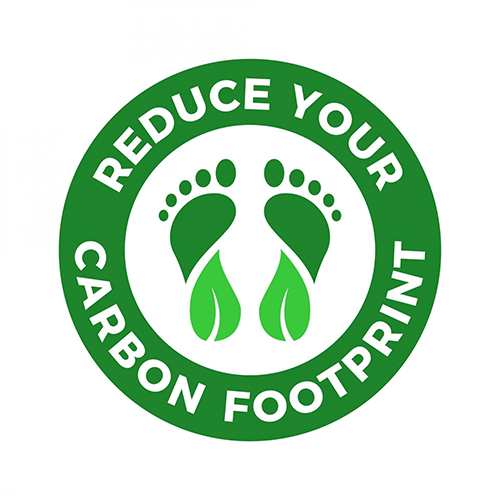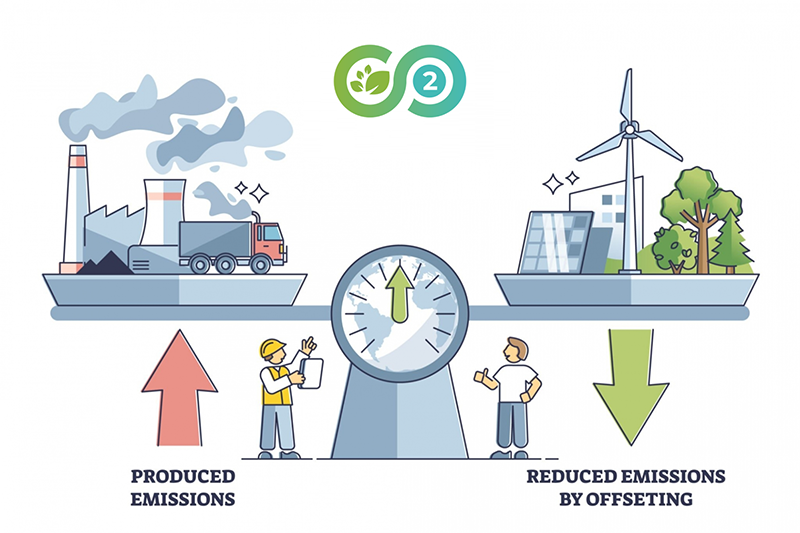
In today’s world, businesses need to focus on sustainability and reducing their carbon footprint to stay competitive. Customers are becoming more environmentally conscious and expect companies to take responsibility for their impact on the environment. Creating a carbon strategy can help your business not only reduce its environmental impact but also gain a competitive advantage in the market. In this article, we will discuss how you can create a carbon strategy to gain a competitive advantage for your business.
Create A Carbon Strategy To Gain A Competitive Advantage For Your Business – Key Steps:
Step 1: Assess your carbon footprint
Before you can create a carbon strategy, you need to know your current carbon footprint. This includes all the greenhouse gases your company emits, from energy use to transportation and waste. By measuring your carbon footprint, you’ll be able to identify areas where you can reduce emissions and save money. You can use online tools or hire a consultant to conduct a carbon audit of your business.
Step 2: Set targets and goals
Once you’ve assessed your carbon footprint, you need to set targets and goals to reduce emissions. This can include reducing energy use, switching to renewable energy, improving transportation efficiency, reducing waste, and more. Your goals should be specific, measurable, achievable, relevant, and time-bound (SMART). You should also prioritize the goals that will have the biggest impact on your carbon footprint.
Step 3: Develop a carbon reduction plan
After setting your targets and goals, you need to develop a plan to achieve them. This can involve a combination of measures, such as energy-efficient equipment, renewable energy sources, employee engagement, waste reduction, and more. You should also consider the financial and operational implications of your plan and seek to integrate carbon reduction into your overall business strategy.
Step 4: Implement and monitor your plan
Once you’ve developed your carbon reduction plan, you need to implement it and monitor its progress. This involves making changes to your operations and processes, training employees, and tracking your emissions and energy use. You should also review and update your plan regularly to ensure that you’re on track to meet your targets and goals.
The Benefits Of Creating A Carbon Strategy
- Reducing costs: Implementing energy-efficient practices and reducing waste can save your business money in the long run.
- Enhancing reputation: Customers are becoming more environmentally conscious and prefer to do business with companies that are socially responsible.
- Meeting regulatory requirements: Governments around the world are implementing regulations to reduce carbon emissions. Having a carbon strategy in place can help your business comply with these regulations.
- Attracting investors: Investors are increasingly looking for companies that have sustainable business practices in place.
Here are some examples of carbon strategies that businesses have implemented to gain a competitive advantage:
- Energy-efficient practices: Implementing energy-efficient practices can reduce your business’s carbon footprint and save you money on energy costs. This could include using LED lighting, installing energy-efficient HVAC systems, and implementing a smart energy management system.
- Sustainable supply chain: Ensuring that your supply chain is sustainable can help you reduce your carbon footprint and enhance your reputation. This could involve sourcing materials from sustainable sources, reducing waste in the supply chain, and implementing sustainable transport practices.
- Carbon offsetting: Carbon offsetting involves investing in projects that reduce carbon emissions to offset your business’s carbon footprint. This can be a cost-effective way to reduce your carbon footprint and enhance your reputation.
FAQs
Q. What is a carbon footprint assessment?
A. A carbon footprint assessment is a process of quantifying the amount of greenhouse gas emissions that your business produces. This assessment helps you identify the areas where your business is contributing to carbon emissions.
Q. What are carbon reduction targets?
A. Carbon reduction targets are specific goals that your business sets for reducing its carbon footprint. These targets should be measurable, achievable, relevant and time-bound.
Q. How can businesses create a carbon strategy?
A. To create a successful carbon strategy, businesses should conduct a carbon footprint assessment, set carbon reduction targets, develop an action plan, implement the plan, and monitor and evaluate its effectiveness.
Q. How can a carbon strategy help my business save costs?
A. Implementing energy-efficient practices and reducing waste can save your business money in the long run. By reducing your energy consumption and waste, you can lower your energy and waste disposal costs.
In conclusion, creating a carbon strategy can give your business a competitive advantage in today’s climate-conscious market. However, implementing a successful carbon strategy requires specialized knowledge and resources. That’s where Climate Carbon comes in.
At Climate Carbon, we provide a range of services to help corporations achieve their net-zero goals. Our services include corporate carbon offsets, renewable energy certificates, carbon dioxide removal, and access to our Climate Carbon Marketplace and RECS & I-RECS Marketplace.
Our corporate carbon offsets are sourced from a diversified portfolio of high-quality carbon projects in Canada and around the world, all of which are certified according to globally recognized criteria and standards. By working with Climate Carbon, you can be confident that your carbon offsets are of the highest quality and are making a real impact in reducing carbon emissions.
In addition, our renewable energy certificates and carbon dioxide removal services can help your business reduce its carbon footprint while also supporting the growth of the renewable energy industry and the development of new carbon capture technologies.
So, if you want to create a successful carbon strategy and gain a competitive advantage for your business, contact Climate Carbon today. Our team of experts can provide you with the knowledge, resources, and services you need to achieve your net-zero goals and make a real difference in the fight against climate change.

